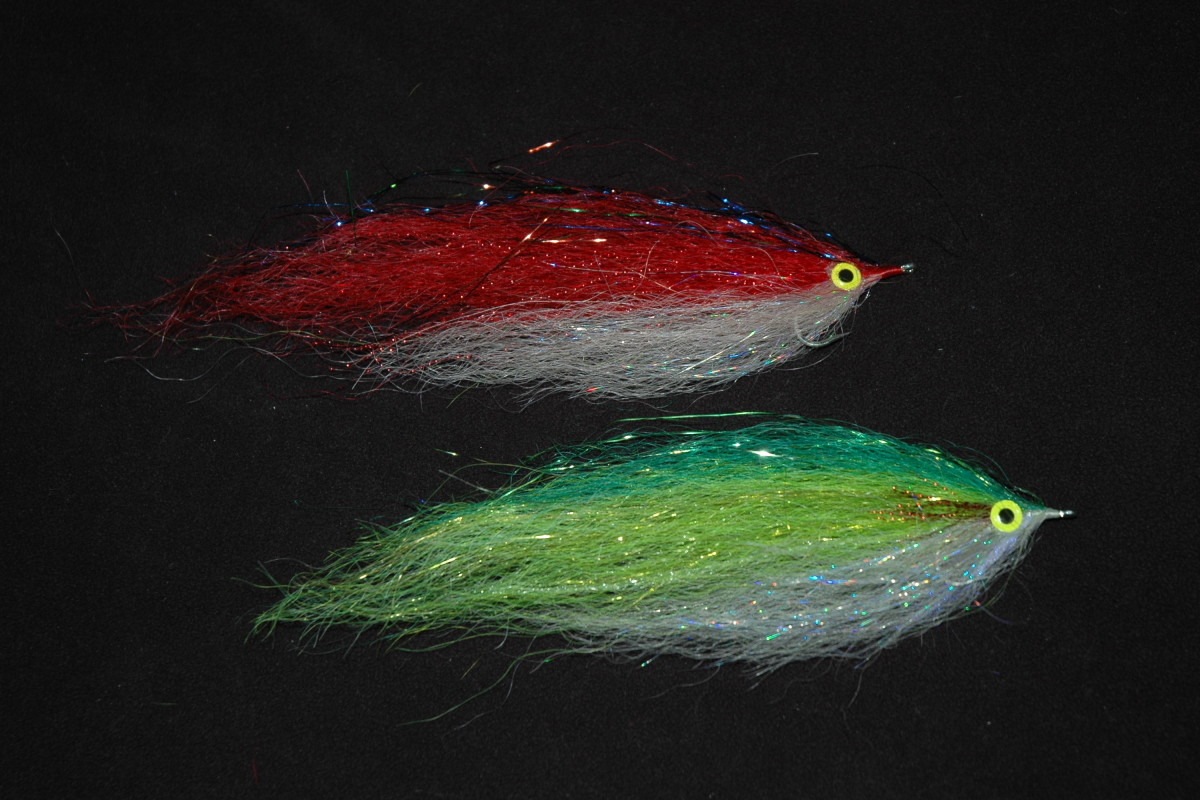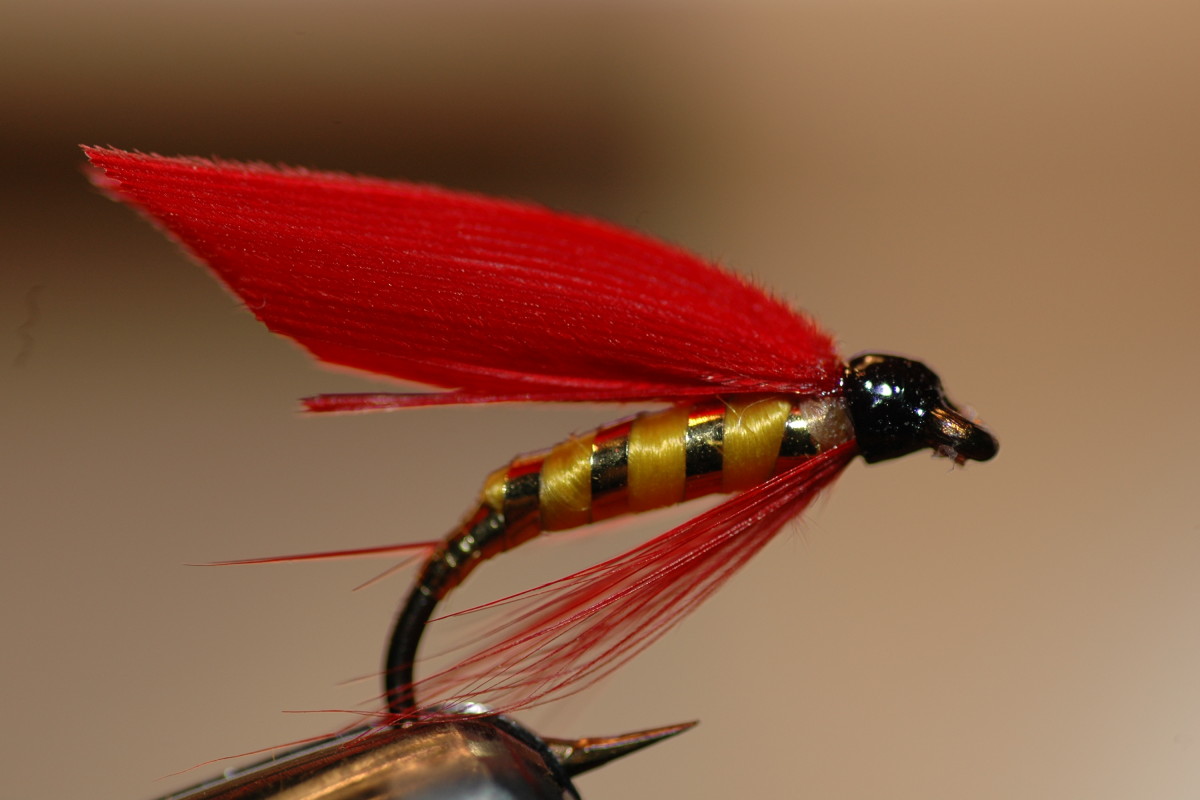
Big Flies for Big Pike
Pike are opportunistic predators famous for sitting “in the weeds” or behind other kinds of structure and ambushing their prey from there. However, they’re almost as famous for following a fly before suddenly rushing and savagely attacking it. In both cases what seems to trigger a strike is a fly and a presentation that provides a lot of stimulus.
An important part of providing this stimulus is to tempt pike, especially if you’re after big pike, with a big fly. The problem in the past has been that big flies have tended to be heavy, bulky and wind resistant, and therefore difficult to cast. Fortunately, fly anglers who especially tackle pike, like Paul Beck of Waterdown, have been working on developing fly patterns that are still big and present an enticing silhouette, but because of the materials incorporated and the manner of construction, are lighter, less wind resistant and more of a pleasure to cast.
have been working on developing fly patterns that are still big and present an enticing silhouette, but because of the materials incorporated and the manner of construction, are lighter, less wind resistant and more of a pleasure to cast.
The key to the construction of these new flies is long streamer materials that don’t absorb much water. There are synthetics available that work well, but Paul Beck likes natural Yak hair that has then been dyed different colours. It can be a little difficult to find locally at times, but yak hair has been a favourite of saltwater anglers for a while. The trick is to tie the yak hair in on both the top and the bottom of the fly, but even more importantly, to double each clump back over itself. The subsequent half clump lies on top of and is pushed up by the preceding half clump. By starting at the rear of the hook and gradually working forward, a long, fat, yet surprisingly light and easy to cast silhouette quickly results. A seven to nine inch fly should be what you’re after. If you don’t want to tie them, most fly shops will have something similar to what is described here.
Consistent with the idea of providing lots of stimulus, several different types of flash material, such as Flashabou, Krystal Flash and tinsel, should also be incorporated into your fly. Leave the flash material long enough so that it extends beyond the end of the other streamer material in imitation of a tail flash. A small clump of red flash material added behind the eyes does a good job of representing gills.
Eyes glued on improve the effectiveness of these big streamer flies for pike. Evolution has recognized that many predators home in on the eyes of their prey. So much so that several species of prey, including the spot tail shiner, one of the most common minnows in Ontario waters, have a second pair of markings that imitate eyes to confuse and throw off the aim of an attacking predator.
Although these lighter flies are easier to cast, you’ll still want to use at least a seven weight rod and preferably an eight weight. Part of the reason for this has to do with the second most common form of take used by pike, the long follow. When pike are tending to take after a long follow, you’ll want to punch out some longer casts, and a heftier rod will enable you to do this. On the retrieve, remember to try suddenly stopping, hesitating and then picking the retrieve back up again. Picking the retrieve back up again will often trigger a strike.
In all cases, whether the pike are following the fly or ambushing it from cover, a varied retrieve will provide more of that strike stimulus that pike are suckers for.
Yak-attack Pattern Recipe
Hook: 3/0 saltwater
Lateral line: flash material
Body/wing: yak hair with a few strands of flash material tied in on top
Belly: white yak hair a little shorter than what was used on the top of the fly
Gills: red flash material
Eyes: stick-on or a substitute
Related
Dan Kennaley
Dan is a fly fishing and outdoors writer who has been writing about the outdoors since 1983 when he first had an article published in Ontario OUT OF DOORS magazine. He was the magazine’s fly fishing editor from 1998 through 2015. Dan enjoys fly fishing in all its dimensions, from the heritage, history and literature of the sport, to fishing for trout and alternate species. He has been an adjunct lecturer in outdoor recreation at the University of Waterloo. In 2008, Dan won the Greg Clark Award for outstanding contributions to the arts of fly fishing at the Canadian Fly Fishing Symposium. He has been a popular guest speaker at fly clubs across the province, at the Canadian Fly Fishing Forum and at the Grand Opportunities Fly Fishing Forum and has been a fly tying instructor at the Canadian Fly Tying Symposium. Dan retired in 2019 as the Director of Engineering and Planning Services for the Township of Woolwich. Dan has also been a long time member of the KW Fly Fishers and in 2020 he became the President of the Club. Dan lives in Rockwood with his wife Jan, cats Tiger and Finnegan, and golden retriever Mitchell.



